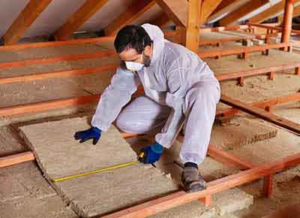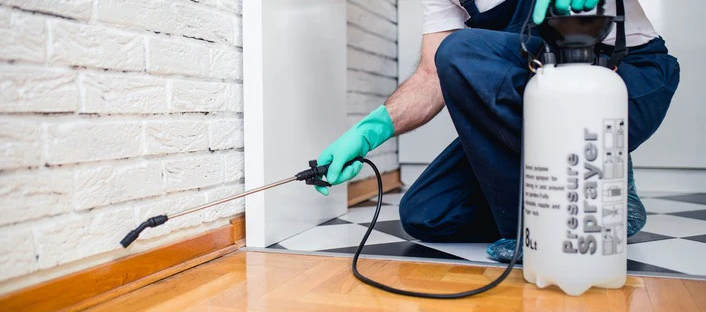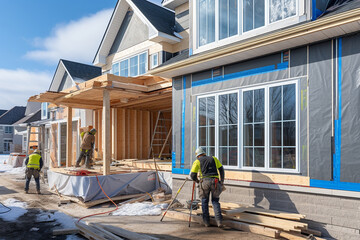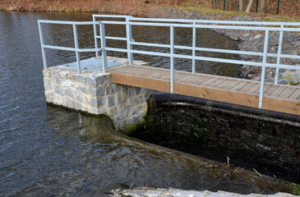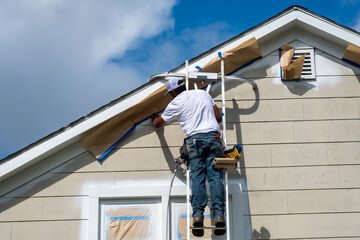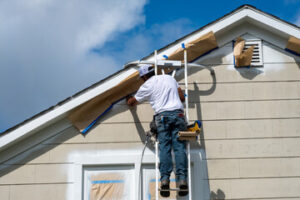A roof is a crucial component of your home that shelters you from the elements. EZ Roofing of Flagler County is the process of handcrafting and maintaining this umbrella-like structure.

Before hiring a roofer, check their credentials and insurance. Review a written estimate that includes price, work schedule and warranty details. There are many options for roofing materials, including metal and newer versions that resemble shakes or slate.
A roof is a vital part of any structure that protects a home or business from weather and other elements. There are many different types of roofing, each with its own advantages and disadvantages. Understanding these factors can help homeowners and builders make the best choices for their specific needs.
In early times, people were limited by the materials that were available in their environment. Palm fronds were a common choice in tropical areas, while wood and mud provided basic protection in primitive homes such as wattle-and-daub huts. Later, clay and stone tiles became popular in colder climates as they were able to withstand frost and snow better than straw and hay.
Modern roofing materials began to appear with the industrial revolution. Galvanized steel, terneplate, corrugated metal sheets and asphalt composites expanded the options for both new construction and re-roofing. Slate remained a popular option for high-end architectural design, while cheaper asphalt shingles became the standard in residential construction.
Other important features of a roof include the soffit (the underside of the eaves), the sheathing and the rafters. The sheathing is the boards that are fastened to rafters, and it is often covered with insulation for added energy efficiency. The soffit prevents water from collecting under the eaves, and it helps to ensure that any trapped moisture does not damage the sheathing or support structures.
Rafters are the structural members that form the skeleton of a roof, and they can be constructed from wood or wood-based products like particleboard, plywood or hardboard. The rafters are usually attached to the ceiling joists, and they provide a rigid surface for the installation of shingles or other roofing materials. In addition, the rafters are sometimes supported by trusses, which are engineered components that supplement the rafters and add additional strength to a structure. The trusses are also used to support plumbing, electrical and HVAC systems, as well as skylights and other features that can be installed in the roof.
Materials
Choosing a material for the roof of your home is one of the biggest decisions you’ll make in building or renovating your house. You’ll want to choose a sturdy material that adds value to your home and will last a long time. Some of the most popular roofing materials are asphalt shingles, wood shakes and tiles, and metal panels. Each type of material has its own advantages and disadvantages.
The most common type of shingle is the standard three-tab asphalt shingle. These are inexpensive and come in a variety of colors. Some are impact-rated and will last for up to 30 years.
Cedar shingles and cedar shakes offer a natural look to a house and provide excellent resistance to rot and insects. They also provide insulation and add beauty to a home’s exterior. However, these types of roofs require routine maintenance and need to be treated for insect infestations. They are a good choice for regions with moderate climates.
Concrete and clay tile roofs are beautiful options that can last up to 50 years or more. They are heavier than other roofing materials and may need extra support. They are a good choice for regions that have warm, dry weather.
A newer option is synthetic tiling, which offers the look of traditional clay tile roofs but has lower installation and maintenance costs. It is also resistant to chemicals and weathering.
Another option is PVC (polyvinyl chloride) membrane. This is a flat-roof membrane that resists UV radiation, weathering, punctures, and chemical exposure. It is highly durable, and has good energy efficiency.
For commercial buildings, the most commonly used roof is EPDM (ethylene propylene diene rubber), which is made from a thick sheet of rubber that’s glued to the surface of the roof. It has good elasticity and is very durable in harsh conditions.
A green roof is a great way to reduce the environmental impact of a commercial or residential building. This roof uses plants to reduce water runoff, improve air quality, and absorb heat. It requires extra structural support, vapor barriers, drainage, soil, compost, and waterproofing.
Installation
The roof is a vital shield that protects our homes and loved ones from the elements. But what goes into the process of roofing to ensure it continues to function properly? In this blog post, we dive deep into the art of roofing to explore the different parts of the system that keep your home safe and dry.
The first step of a roof installation is to prepare the site. This involves covering surrounding landscaping, positioning tarps to catch debris, and making sure the work area is safe for workers and homeowners alike. It also involves inspecting the existing roof and ensuring that it is structurally sound and ready for a new layer.
After the underlayment is in place, it’s time to start laying shingles. The contractor will start at the bottom of the slope and work their way up, overlapping each row by at least six inches and nailing them down firmly. The next step is to waterproof the valleys, which are the V-shaped areas that run down from the peak of the roof. The contractor will use underlayment and felt paper to do this, following a specific method that accounts for the valley’s unique structure.
Maintenance
The roof protects the interior from the elements, adds value to a home or commercial property, and contributes to energy efficiency. It is a complex system, and exposure to the sun, rain, and wind can deteriorate even the most robust materials. Proactive maintenance can identify and repair minor problems, preventing costly repairs and minimizing service interruptions and energy losses.
Routine inspections by trained roofing professionals are the first step in effective maintenance. An established procedure for these inspections is important to ensure that all issues are identified and documented. This is especially important after major weather events that can damage or degrade the roofing materials.
During an inspection, the roofing contractor should look for signs of structural issues and leaks. Areas around penetrations, such as chimneys or vents, are particularly susceptible to leaking and should be inspected frequently. Other areas of interest include the condition of drains and gutters; clogged gutters can cause water to flow over fascia boards and onto the roof, causing damage. The roofing contractor should also check for moss, algae, or other accumulated growth, as these can trap moisture and accelerate shingle deterioration.
The roofing contractor should document the results of the maintenance inspection and any recommended repairs, making sure that all relevant information is included in the project log. This record serves as a guide for future maintenance activities and can be used to evaluate the effectiveness of the roofing maintenance program. This information is invaluable to facility managers in evaluating contractor performance, forecasting potential problems, and developing a budget.
In addition to regular inspections, the roofing contractor should maintain a comprehensive maintenance plan that includes regular cleaning and repairs of the roof and its components. These tasks should be tailored to the specific needs of each roof and should take into account seasonal considerations. For example, in a climate with severe winters, the roof should be inspected and prepared for snow and ice buildup before the snowy season arrives.
In addition to addressing roof maintenance, the maintenance plan should address other building components that may be affected by the roofing system, such as doors and windows, or siding. This helps to minimize the total cost of ownership of the roof.





